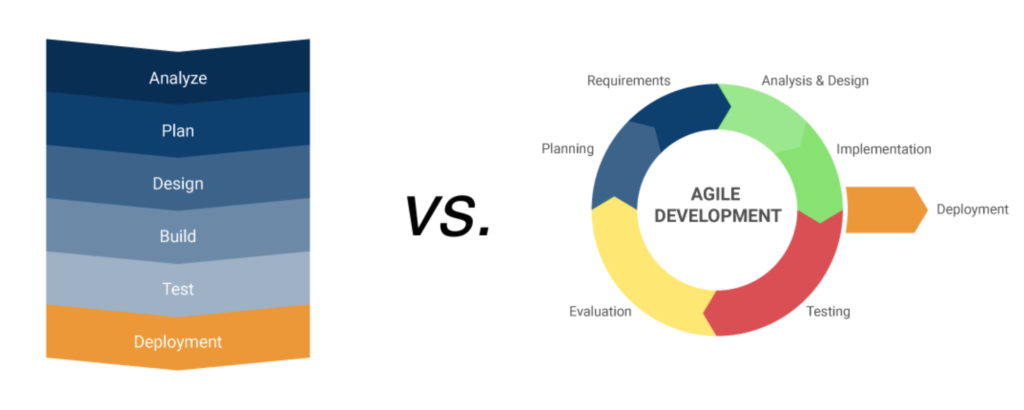Introduction
Software development methodologies play a crucial role in determining project success. Among the most prominent approaches are the Agile and Waterfall models, each with its strengths and weaknesses. In this in-depth comparison, we will explore the characteristics of both methodologies, supported by relevant statistics, to help you make an informed choice for your projects.
The Waterfall Model
The Waterfall model follows a linear, sequential approach to software development, where each phase must be completed before moving on to the next. Extensive documentation ensures a clear understanding of requirements, making it suitable for projects with well-defined and stable requirements. According to a study by Standish Group, waterfall projects are completed on time 68% of the time, compared to 46% for agile projects. Additionally, the same study found that waterfall projects are more likely to be defect-free, with an average defect rate of 10%, compared to 20% for agile projects. Key considerations for the Waterfall model include:
- On-Time and Within Budget: Waterfall projects have a higher likelihood of being completed on time and within budget due to their structured and sequential nature.
- Defect-Free Deliverables: The thorough documentation and sequential flow of the Waterfall model contribute to a lower defect rate in the final product.
- Suitable for Stable Requirements: Waterfall is a good fit for projects with clear, unchanging requirements and well-defined scopes.
The Agile Model
The Agile model emphasizes flexibility, adaptability, and customer collaboration. It divides development into short iterations (sprints) that deliver potentially shippable increments. Agile projects allow for changes and improvements throughout development, making it suitable for projects with evolving or uncertain requirements. Despite the benefits of Agile, it is important to consider the statistics mentioned earlier to make an informed choice. While Agile projects may experience some challenges, they also bring significant advantages to the table. Key considerations for the Agile model include:
- Iterative and Adaptive Approach: Agile enables continuous improvements and responsiveness to changing requirements, ensuring better alignment with customer needs.
- Customer Collaboration: The involvement of customers and stakeholders throughout the process leads to higher customer satisfaction and a product that better meets their expectations.
- Suitable for Evolving Requirements: Agile is well-suited for projects with evolving, uncertain, or rapidly changing requirements.
Choosing the Right Model
Selecting the appropriate development methodology requires a careful assessment of project requirements and goals. Here are essential considerations to help you make the right choice:
- Project Size and Complexity: Waterfall may be more suitable for larger projects with lower complexity, as its structured approach ensures better control over resources and timelines. Agile is ideal for smaller, more complex projects, as it allows for adaptability and incremental development.
- Uncertainty Level: For projects with well-defined and stable requirements, the Waterfall model may be preferred. In contrast, Agile is more suitable for projects with evolving or uncertain requirements.
- On-Time Delivery and Defects: Consider the Standish Group and IBM statistics that indicate that Waterfall projects are more likely to be completed on time and with fewer defects. Weigh these factors against the benefits of flexibility and customer collaboration offered by Agile.
Conclusion
Choosing between the Agile and Waterfall models is pivotal for the success of software development projects. The statistics reveal that Waterfall projects have a higher likelihood of being completed on time and with fewer defects. However, these advantages must be balanced against the adaptability, customer-centricity, and responsiveness that Agile brings to the table.
Ultimately, the choice depends on the unique requirements and nature of each project, as well as the organizational culture. You may also consider adopting a hybrid approach, incorporating elements of both methodologies to leverage their respective strengths. Careful evaluation and analysis will lead to an informed decision that aligns the chosen model with the project’s objectives, ensuring a successful and satisfying software development experience.

